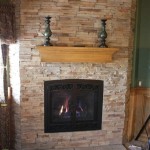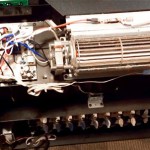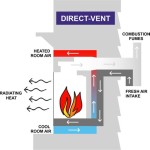```html
Gas Fireplace Basement: Enhancing Comfort and Value
A gas fireplace in a basement can transform a typically underutilized space into a warm, inviting, and functional area. Basements often suffer from being colder and damper than other parts of a home, making them less appealing for leisure activities or entertaining. Installing a gas fireplace addresses these issues while also offering several other benefits, including increased home value, energy efficiency, and aesthetic appeal. This article will explore the advantages of adding a gas fireplace to a basement, covering key considerations for installation and exploring different types of gas fireplaces suitable for basement environments.
Improved Basement Comfort and Usability
The primary reason many homeowners consider a gas fireplace for their basement is to directly address the issue of cold temperatures. Basements, being partially or fully underground, tend to remain cooler than the above-ground floors of a house. This can make the space uncomfortable, particularly during the colder months. A gas fireplace provides a reliable and efficient source of heat, allowing homeowners to utilize their basement year-round.
By increasing the temperature, a gas fireplace can transform a basement into a more habitable and enjoyable space. It can become a cozy family room, a home theater, a playroom for children, or a functional home office. The added warmth encourages more frequent use, effectively expanding the living space of the home. This improved usability translates directly to an enhanced quality of life for the homeowners.
Furthermore, the presence of a fireplace creates a focal point, adding visual interest and a sense of comfort. The flickering flames provide a relaxing ambiance, making the basement a more inviting place to spend time. This is particularly beneficial if the basement is used for entertainment purposes, as it contributes to a more welcoming and comfortable environment for guests.
Beyond the immediate comfort benefits, a gas fireplace can also help to manage humidity levels in the basement. While it won't directly dehumidify the space, the added heat can help to reduce condensation and improve air circulation, which can indirectly contribute to a drier and more comfortable environment. This is particularly important in basements that are prone to dampness or mold growth.
Gas Fireplace Installation Considerations for Basements
Installing a gas fireplace in a basement requires careful planning and consideration of several factors. Unlike installing a fireplace on an above-ground floor, basements often present unique challenges related to ventilation, gas line access, and local building codes. Addressing these challenges correctly is crucial for ensuring a safe and efficient installation.
One of the most critical considerations is proper ventilation. Gas fireplaces produce exhaust gases that must be safely vented to the outside. Direct vent fireplaces are a popular choice for basements because they vent directly through an outside wall, eliminating the need for a chimney. This simplifies the installation process and reduces the risk of backdrafting, which can occur with traditional chimney systems.
Another important consideration is access to a gas line. If a gas line is not already present in the basement, one will need to be installed. This typically involves running a new gas line from the main gas meter to the fireplace location. It is essential to hire a qualified and licensed gas fitter to perform this work, ensuring that the gas line is properly sized and installed according to local codes.
Local building codes and regulations must also be carefully followed. These codes often specify requirements for fireplace clearances, ventilation, gas line installation, and fire safety. Obtaining the necessary permits before starting the installation is crucial to avoid potential fines and delays. A professional fireplace installer will be familiar with local codes and can ensure that the installation meets all requirements.
Finally, the structural integrity of the basement must be assessed. The floor must be able to support the weight of the fireplace, and the surrounding walls must be fire-resistant. In some cases, it may be necessary to reinforce the floor or walls before installing the fireplace. A structural engineer can assess the basement's structure and recommend any necessary modifications.
Types of Gas Fireplaces Suitable for Basements
Several types of gas fireplaces are well-suited for basement installations, each offering different features and benefits. The best choice for a particular basement will depend on factors such as budget, space constraints, aesthetic preferences, and ventilation options. Popular choices include direct vent fireplaces, vent-free fireplaces, and gas fireplace inserts.
Direct vent fireplaces are a common and versatile option. They vent directly to the outside through a wall or roof, eliminating the need for a chimney. This makes them ideal for basements where chimney access is limited or non-existent. Direct vent fireplaces are available in a wide range of styles and sizes, and they offer excellent heating efficiency.
Vent-free gas fireplaces, also known as ventless fireplaces, do not require any venting to the outside. They burn gas very efficiently and produce minimal exhaust gases. While they offer the convenience of easy installation, vent-free fireplaces are subject to certain restrictions and may not be permitted in all jurisdictions. It is crucial to check local building codes before installing a vent-free fireplace.
Gas fireplace inserts are designed to be installed into an existing fireplace opening. This can be a good option if the basement already has a traditional masonry fireplace. Gas fireplace inserts offer the convenience and efficiency of a gas fireplace while retaining the aesthetic appeal of a traditional fireplace. They require a chimney liner to be installed to vent the exhaust gases safely to the outside.
Another option gaining popularity is electric fireplaces. While not technically gas fireplaces, they offer similar visual appeal and can provide supplemental heat. Electric fireplaces are easy to install and do not require any venting or gas line connections. They are a safe and convenient option for basements, although they may not provide as much heat as a gas fireplace.
Enhancing Home Value with a Basement Gas Fireplace
Investing in a gas fireplace for a basement can significantly enhance the overall value of a home. A finished and comfortable basement adds usable living space, making the property more attractive to potential buyers. The presence of a gas fireplace further enhances the appeal of the basement, creating a cozy and inviting atmosphere.
Finished basements are often considered a desirable feature by homebuyers. A brightly lit, well-insulated, and temperature-controlled basement can serve as an additional living room, a guest suite, or a recreational area. The addition of a gas fireplace elevates the basement from a basic finished space to a truly comfortable and inviting living area. This perceived value translates into a higher selling price for the home.
Energy efficiency is another factor that contributes to the increase in home value. Gas fireplaces are generally more energy-efficient than traditional wood-burning fireplaces. They provide a consistent and controllable source of heat, allowing homeowners to lower their overall heating costs. This energy efficiency is an attractive selling point for potential buyers who are concerned about energy bills.
The aesthetic appeal of a gas fireplace also plays a role in increasing home value. A well-designed fireplace can become a focal point of the basement, adding visual interest and creating a warm and inviting atmosphere. This can be particularly appealing to homebuyers who are looking for a home with character and charm.
In addition to increasing the resale value of the home, a gas fireplace can also provide immediate benefits to the homeowner. It enhances the comfort and usability of the basement, allowing them to enjoy the space more fully. This increased enjoyment translates into an improved quality of life for the homeowner, making the investment in a gas fireplace a worthwhile one.
```
Netnewsledger Things To Consider When Adding A Fireplace Your Basement

Will A Fireplace Heat Basements We Love Fire

Fireplace In Basement 101 Everything Homeowners Must Know

Check Out The Five Reasons Of Installing A Linear Fireplace

38 Brilliantly Furnished Basements Photo Gallery Basement Fireplace Corner Gas Remodeling

Basement Fireplace Ideas Photos Houzz

Fireplace Basement Renovation Hamilton On Remodeling Design

Basement Remodel Psch Corner Fireplace Remodeling

Heating Your Basement

Cozy Up With Fireplaces Electric Vs Gas Sheffield Homes Finished Basements And More
Related Posts








